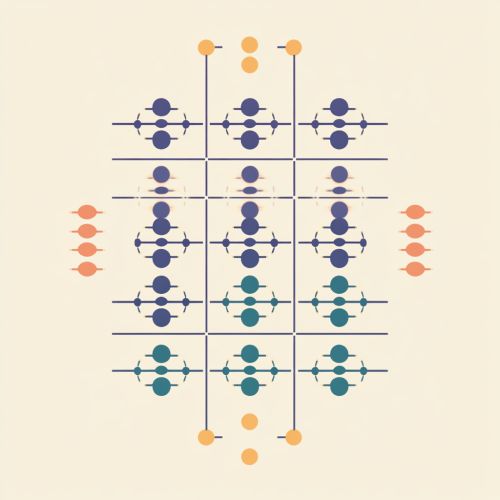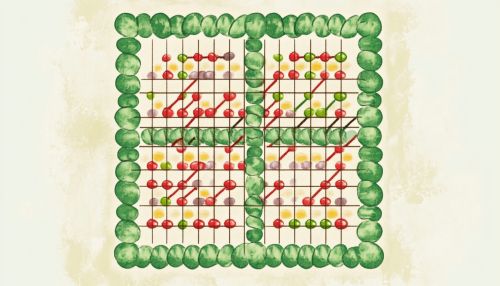Punnett squares
Introduction
A Punnett square is a graphical representation used to predict the genotypes of offspring from a particular cross or breeding experiment. Named after Reginald C. Punnett, who devised the approach, the square is a simple matrix that allows geneticists to visualize the possible combinations of alleles and their associated probabilities.
Historical Background
Reginald C. Punnett, an English geneticist, introduced the Punnett square in the early 20th century. His work was instrumental in the field of genetics, particularly in understanding Mendelian inheritance. The Punnett square remains a fundamental tool in genetics, used extensively in educational settings and research.
Structure and Function
The Punnett square is typically a two-dimensional grid. Each axis of the grid represents the alleles contributed by one parent. The cells within the grid represent the possible allele combinations in the offspring.
Monohybrid Crosses
A monohybrid cross involves a single trait. For example, consider a cross between two heterozygous pea plants (Tt) for height, where 'T' is the dominant allele for tallness and 't' is the recessive allele for shortness. The Punnett square for this cross would be a 2x2 grid:


The resulting genotypes would be:
- TT (25%)
- Tt (50%)
- tt (25%)
Dihybrid Crosses
A dihybrid cross involves two traits. For example, consider a cross between two heterozygous pea plants for seed shape (Rr) and seed color (Yy), where 'R' is the dominant allele for round seeds, 'r' is the recessive allele for wrinkled seeds, 'Y' is the dominant allele for yellow seeds, and 'y' is the recessive allele for green seeds. The Punnett square for this cross would be a 4x4 grid:
The resulting genotypes would be:
- RYRY
- RYry
- RyRY
- Ryry
- rYRY
- rYry
- ryRY
- ryry
Applications in Genetics
Punnett squares are widely used in various fields of genetics, including:
Predicting Genetic Disorders
Punnett squares can predict the likelihood of offspring inheriting genetic disorders. For example, in autosomal recessive disorders like cystic fibrosis, both parents must carry one copy of the mutated gene for their child to be affected.
Breeding Programs
In agriculture and animal husbandry, Punnett squares help in predicting the traits of offspring, allowing for the selection of desirable characteristics.
Genetic Counseling
Genetic counselors use Punnett squares to explain the risks of inherited conditions to prospective parents.
Limitations
While Punnett squares are useful, they have limitations. They assume that alleles segregate independently and that there is no linkage between genes. Additionally, they do not account for more complex inheritance patterns such as incomplete dominance, codominance, or polygenic traits.
Advanced Topics
Incomplete Dominance
In incomplete dominance, the heterozygous phenotype is intermediate between the two homozygous phenotypes. For example, in snapdragons, crossing a red-flowered plant (RR) with a white-flowered plant (rr) results in pink-flowered offspring (Rr).
Codominance
In codominance, both alleles are fully expressed in the heterozygous condition. An example is the ABO blood group system, where both A and B alleles are expressed in individuals with AB blood type.
Polygenic Inheritance
Polygenic inheritance involves multiple genes contributing to a single trait. Human skin color is an example, influenced by several genes, making the prediction of offspring phenotypes more complex.
See Also
- Mendelian Inheritance
- Genetic Counseling
- Autosomal Recessive Disorder
- Incomplete Dominance
- Codominance
- Polygenic Inheritance
References
- [Add references here if available]
